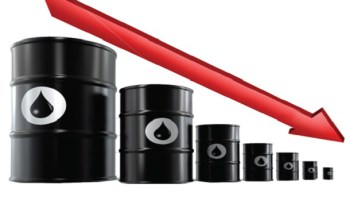
Oil price crash: the time is wrong
Energy 1 February 2016Since the last time we talked about the oil price trends and its interconnected economical and political causes and effects, the oil price further slumped to its lowest level since September 2003. Wood Mackenzie, an industry consultancy, has estimated that at $30 a barrel only 6% of global production covers its operating costs. This means that it is uneconomic to drill new deepwater wells at selling prices below $60 a barrel, but once wells are built it may still make economic sense to keep them running at prices well below that. Such resilience is one of the reason why analysts expect prices to remain lower for longer.
Thus, 2016 has so far confirmed last year trend of low prices and high production. On January 19th the International Energy Agency (IEA), a prominent energy forecaster, issued a stark warning: “The oil market could drown in oversupply.” Indeed, it is not the price collapse that worries the IEA: it is the prospect of a global shock when the Saudis have flushed out rivals and the market springs back violently.
As already explained in NEU previous article, the slide came after OPEC said persistently low prices would finally begin to bite for rival producers in 2016, forcing the US and Canada to cut back on production this year. But shale drillers, as well as producers in Canada and Russia have proven resilient in the face of the 18-month price crash – which is now the worst in the post-war era.
Forecasting the oil price is a mug’s game, but few expect it to start rising before 2017. The lifting of nuclear-related sanctions against Iran on January 16th puts those barrels at the forefront of the country’s quest to recapture a share of international oil markets that it has been shut out of for much of the past decade. The prospect of Iran swiftly dispatching its supertankers to European and Asian refineries to undercut supplies from Saudi Arabia, Iraq and Russia helped push the world’s main benchmarks, Brent and West Texas Intermediate (WTI), to their lowest levels since 2003 on January 20th; WTI tumbled by 6.7% to under $27 a barrel, its biggest one-day fall since September. Indeed, most analysts said the price rout is expected to deepen as international companies are now free to invest in Iran oil resources as the ban on currency conversions is lifted and Iranian oil is available to purchase on international markets.
Most experts agree that cheap oil is a net stimulus for the global economy and should lift growth, even if the initial shock for energy companies and oil exporters is so intense that it is negative at first. Plus, along with bank runs and market crashes, oil shocks have rare power to set monsters loose. Starting with the Arab oil embargo of 1973, people have learnt that sudden surges in the price of oil cause economic havoc.
Conversely, when the price slumps because of a glut, as in 1986, it has done the world a power of good. The rule of thumb is that a 10% fall in oil prices boosts growth by 0.1-0.5 percentage points.
In the past 18 months the price has fallen by 75%, from $110 a barrel to below $27. Yet this time the benefits are less certain. Although consumers have gained, producers are suffering grievously. The effects are spilling into financial markets, and could yet depress consumer confidence. Perhaps the benefits of such ultra-cheap oil still outweigh the costs, but markets have fallen so far so fast that even this is no longer clear.
Cheap oil hurts demand in more important ways. When crude was over $100 a barrel it made sense to spend on exploration in out-of-the-way provinces, such as the Arctic, West Africa and deep below the saline rock off the coast of Brazil. As prices have tumbled, so has investment.
Projects worth $380 billion have been put on hold. In America spending on fixed assets in the oil industry has fallen by half from its peak. The poison has spread: the purchasing managers’ index for December, of 48.2, registered an accelerating contraction across the whole of American
manufacturing. In Brazil the harm to Petrobras, the national oil company, from the oil price has been exacerbated by a corruption scandal that has paralysed the highest echelons of government.
The fall in investment and asset prices is all the more harmful because it is so rapid. As oil collapses against the backdrop of a fragile world economy, it could trigger defaults. The possible financial spillovers are hard to assess. Much of the $650 billion rise in emerging-market corporate debt since 2007 has been in oil and commodity industries.
Oil plays a central role in a clutch of emerging markets prone to trouble. With GDP in Russia falling, the government could well face a budgetary crisis within months. Venezuela, where inflation is above 140%, has declared an economic state of emergency.
It is true that some countries, such as India and China, are winning. At the same time, oil-dependent economies like Saudi Arabia and Venezuela should take the opportunity to embrace reform. It offers oil importers, as we said, a chance to buy cheap…
Yet, the time is wrong. This oil shock has come as the world economy is still coping with the aftermath of the financial crash. We might think that there could be no better time for a boost. In fact, the world could yet be laid low by an oil monster on the prowl.


